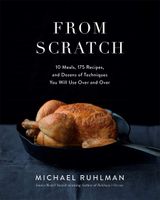Advertisement
Preparation info
- Difficulty
Easy
Appears in
Published 2019
Sauerkraut is another one of those preparations that you can buy anywhere, but it tastes so different from what you can make at home in a week that the store-bought stuff should be called something else.
Using the magical proportion of the 5 percent brine (which I learned from my first instructor, chef


